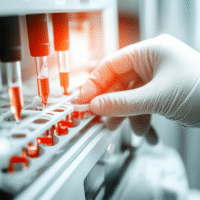Objective of the Study
This study looked at whether allowing children and teens to see a physiotherapist directly in the emergency department (ED) for muscle and bone issues would be helpful compared to the usual care from a doctor.
What Worked?
- The study successfully enrolled 53% of eligible patients in just 2 months.
- 92% of participants stayed in the study until the end.
- Data collection was very high, with 92% to 98% compliance four weeks after the ED visit.
What Didn’t Work?
- The study was a pilot and did not test the full impact of physiotherapy on patient outcomes.
Benefits for Patients and Clinics
- This approach could improve access to care for children and teens with muscle and bone problems.
- It may lead to better satisfaction and outcomes for patients.
Real-World Opportunities
- Hospitals can implement direct-access physiotherapy in their emergency departments.
- Doctors can collaborate with physiotherapists to improve patient care pathways.
Measurable Outcomes to Track
- Patient satisfaction levels.
- Changes in pain and function.
- Follow-up care needed after the initial visit.
AI Tools to Consider
- AI can help track patient outcomes and satisfaction through surveys.
- AI systems can assist in scheduling and managing follow-up appointments.
Step-by-Step Plan for Clinics
- Start by training staff on the benefits of direct-access physiotherapy.
- Implement a pilot program with a small group of patients.
- Gather feedback and track outcomes to assess effectiveness.
- Expand the program based on the initial success and findings.


























